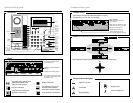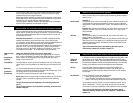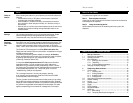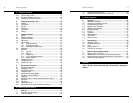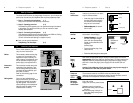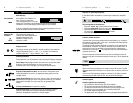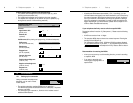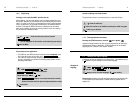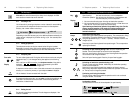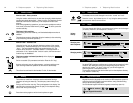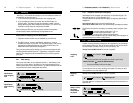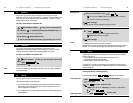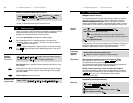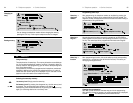
1Table of contents
Table of contents: A – Telephone operation
1 Start up: Overview..........................................................................4
1.1 Connecting the telephone.................................................................4
1.2 Operating overview...........................................................................6
1.3 Initial installation................................................................................8
1.3.1 Setting up the connection....................................................8
1.3.2 Telephonig..........................................................................10
1.3.3 Entering additional sharacters............................................11
1.4 Changing the display language .......................................................11
2 Telephoning: Basic functions .......................................................12
2.1 The first steps ................................................................................12
2.1.1 Initiating a call ....................................................................12
2.1.2 Dialing preparation .............................................................12
2.1.3 Accepting calls...................................................................12
2.1.4 Ending the call....................................................................12
2.2 Open listening and hands-free operation ........................................13
2.3 Number redialing.............................................................................14
2.4 Muting ...........................................................................................14
2.5 Handset volume..............................................................................15
2.6 Ringer .............................................................................................15
2.7 DTMF signalling ..............................................................................15
2.8 Keypad information .........................................................................15
2.9 Identifying ......................................................................................16
2.9.1 Basic setting ......................................................................16
2.9.2 Temporary identification changeover .................................17
About this User’s Guide
The present user’s guide is in two sections:
Part A: Basic telephone functions:
In part A of the user’s guide the common basic functions of the SmartLine
D750 telephone are explained. .
Part B: Using the answering device:
Part B explains the functions of the answering device as a part of the
telephone.
Notes
Notes
When choosing the location for your telephone you should think about the
following:
• Avoid the direct vicinity of CD players, video recorders, televisions,
computers and microwave equipment.
• Avoid installation in locations with heavy concentrations of smoke or
dust, exposure to direct sunlight or humidity or in the direct vicinity of
heat sources.
• Place the unit on a non-slip mat so that the plastic feet of the unit are not
damaged by the furniture coating, leaving undesirable marks on the
furniture surface.
You can adapt the telephone to suit your personal requirements. Please
note that changed function settings are stored by the unit approx.
10 seconds after entry. Only after this time are the changes effective.
Euro ISDN is the new European standard for digital telecommunication. The
connection to conventional (national) ISDN and to the analogue telephone
network is performed easily via the existing exchanges. In this User’s
Guide, ”ISDN” refers to Euro ISDN in conjunction with the SmartLine D750.
The SmartLine D750 is designed for the Euro ISDN multi-device line.
Please note that whether functions can be used or not depends on the type
of ISDN connection ordered:
The following line access types are available, for example, in Germany:
Simple, standard and comfort access. You can extend the range of features
by ordering new features from your telephone network provider
(in Germany, Deutsche Telekom AG).
In most other other European countries ISDN features are offered as
extendible modules. If you do not exactly know which features are
obtainable from your network provider, please always use the ”comfort”
line access type. The features are then used depending on the network. Of
all the possible ISDN features, only ”closed user group” (CUG) and
”subaddressing” (SUB) are not supported.
The ”exchange connection” function is at present in planning.
It can currently only be used at one SmartLine D750 line with a PABX
(Private Automatic Branch Exchange).
The use of certain functions assumes that the caller/person you are calling
has an ISDN line and has activated the corresponding functions. Example:
Display of a caller’s telephone number is only possible if he/she has an ISDN
line and has not suppressed his/her telephone number display. The same
applies correspondingly for the transfer of message texts, for example.
Choice of
location
Settings
Functions
of the ISDN
line




